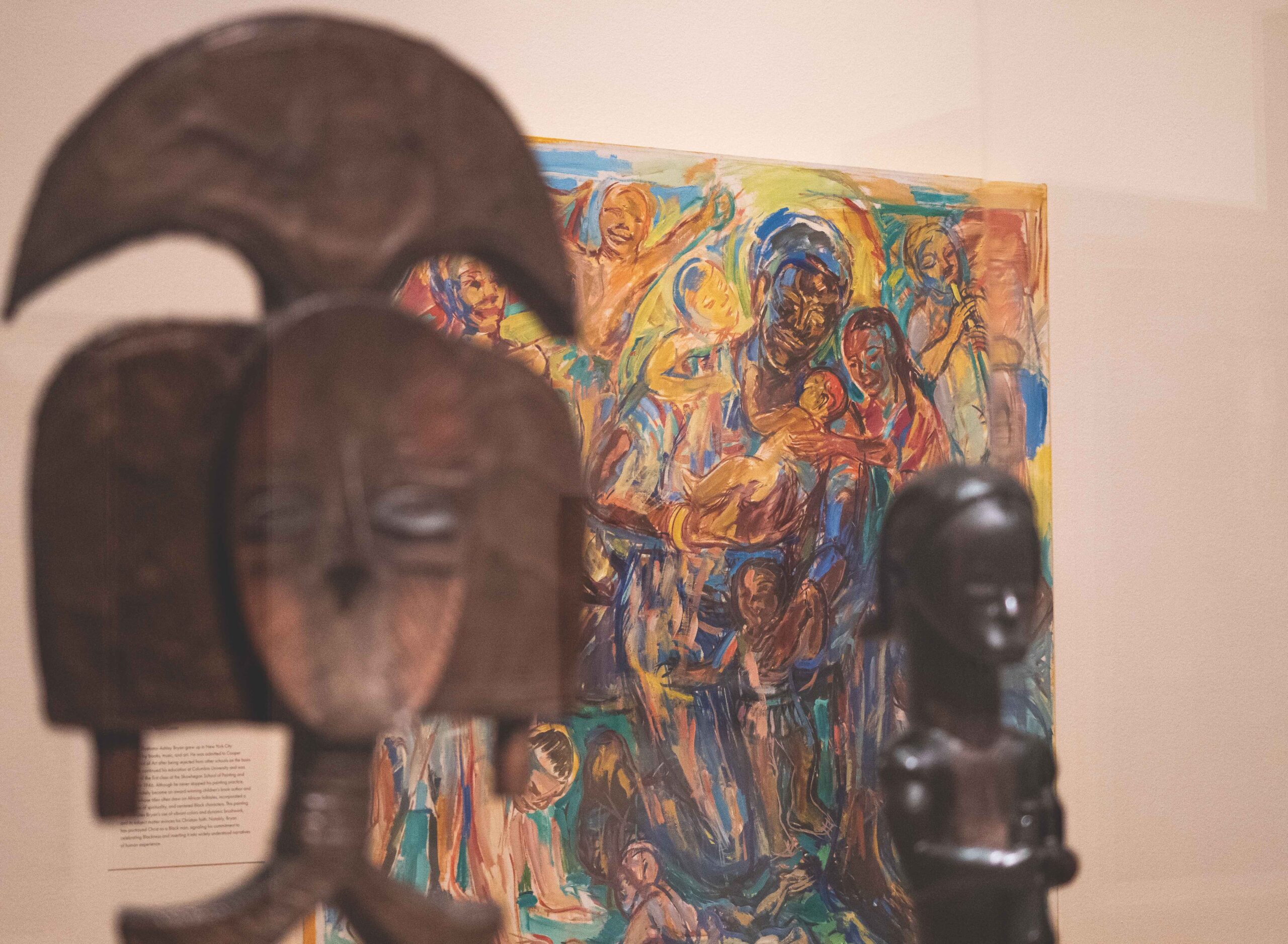“Currents” exhibition makes waves at the BCMA
October 20, 2023
 Alex Spear
Alex SpearLast Thursday, the Bowdoin College Museum of Art (BCMA) opened “Currents: Art Since 1875,” an exhibition of contemporary and modern art centered on three themes: “Labor / Bodies,” “Migration / Environment,” and “Inspiration / Appropriation.” BCMA Curator Casey Braun selected the works shown in the collection in conjunction with a sister exhibition, “Threads: Artists Weave their Worlds,” which adjoins “Currents.”
Braun’s background in global Indigenous art at the University of Kansas’ Spencer Museum of Art carries forward in “Currents.” When she arrived at Bowdoin fourteen months ago, she was particularly excited about the College’s collection.
“My own background has been looking at art that was made in the Americas and Africa and to some extent, Oceania, by Indigenous people,” Braun said. “It was really special when I came to Bowdoin, which has this fantastic collection, and an amazing history of being one of the oldest public art collegiate collections in the country.”
“Currents” is also special for Braun in that it is the first exhibition that she has led from start to finish since she arrived at the College fourteen months ago. Braun was the lead curator of the exhibition, and she worked closely with the museum’s staff throughout the process, including BCMA Co-Directors Anne Collins Goodyear and Frank Goodyear. Anne Goodyear described the BCMA’s staff as a deeply interconnected organization, and though Braun headed the exhibition, staff members helped throughout the process, serving as sounding boards for her ideas.
With the exception of the piece “Sister Lucas” by Barkley Hendricks, which is in the museum on a long term loan, every work in the exhibition is from the BCMA’s permanent collection. Braun first took inspiration from a seemingly disparate group of works within the College’s collection—building messaging around links she drew between each piece.
“[The process] was very iterative, very organic,” Braun said. “The list of what was on view changed constantly—it got bigger, it got smaller. That’s also how I developed the themes. It was really just a process of discovery. That was really, really special.”
One of the exhibition’s formative works was part of Alison Saar’s “Skillet Study” series, which inspired the “Labor / Bodies” theme of the collection, building a dialectic between the unseen labor of Black women and the nurturing warmth of Saar’s experience in kitchens. The pieces in Labor / Bodies ask viewers to confront the essential contradictions that form our world, and, instead of picking between a dichotomy of answers, to build an answer that synthesizes difference.
To Goodyear, the exhibition marks a continuation of Bowdoin’s legacy of marking and documenting history through the lens of visual art. She described that the College’s history of art collection and education began with James Bowdoin III’s 1811 donation of 141 drawings and 70 paintings.
“In a sense, even today, over 200 years later, we continue to recognize this fundamental principle that there is an implicit connection between the visual arts, the capacity to cultivate creative thinking and, in some sense, being a responsible global citizen,” Goodyear said.
Goodyear was excited that in studying the links between modern, contemporary and historical art, and in putting these pieces in the modern contexts, “Currents” imparts a message about contemporary society, the body politic and communal mores.
In the exhibition’s first week, this message has already resonated with attendees.
“I think the history of all the people [is valuable]—their struggles, and the fact that they’re preserving that, and it’s not going to get forgotten,” Harpswell resident Ingrid Holmes said.
“I think that the time has come for us to have an installation that allows all of us to think about what it means to collect recent art for the museum,” Goodyear said. “What are the stories and observations that recent and contemporary artists in our own era have to share with us?”
“Currents” is not limited to Western pieces, either. Drawing from Braun’s experience in Indigenous art, the works come from a range of countries and continents in an attempt to build a global framework to study race, gender, class and power. In expanding beyond Europe or the United States, Braun seeks to tell a more complete reflection of the world and its thematic lexicons.
“I hope that [students] can come here and see some aspect of their lives represented,” Braun said. “Really, for me, it’s about demonstrating that art has the power to tell a lot of different stories that are relevant to things that are going on today.”

Comments
Before submitting a comment, please review our comment policy. Some key points from the policy: